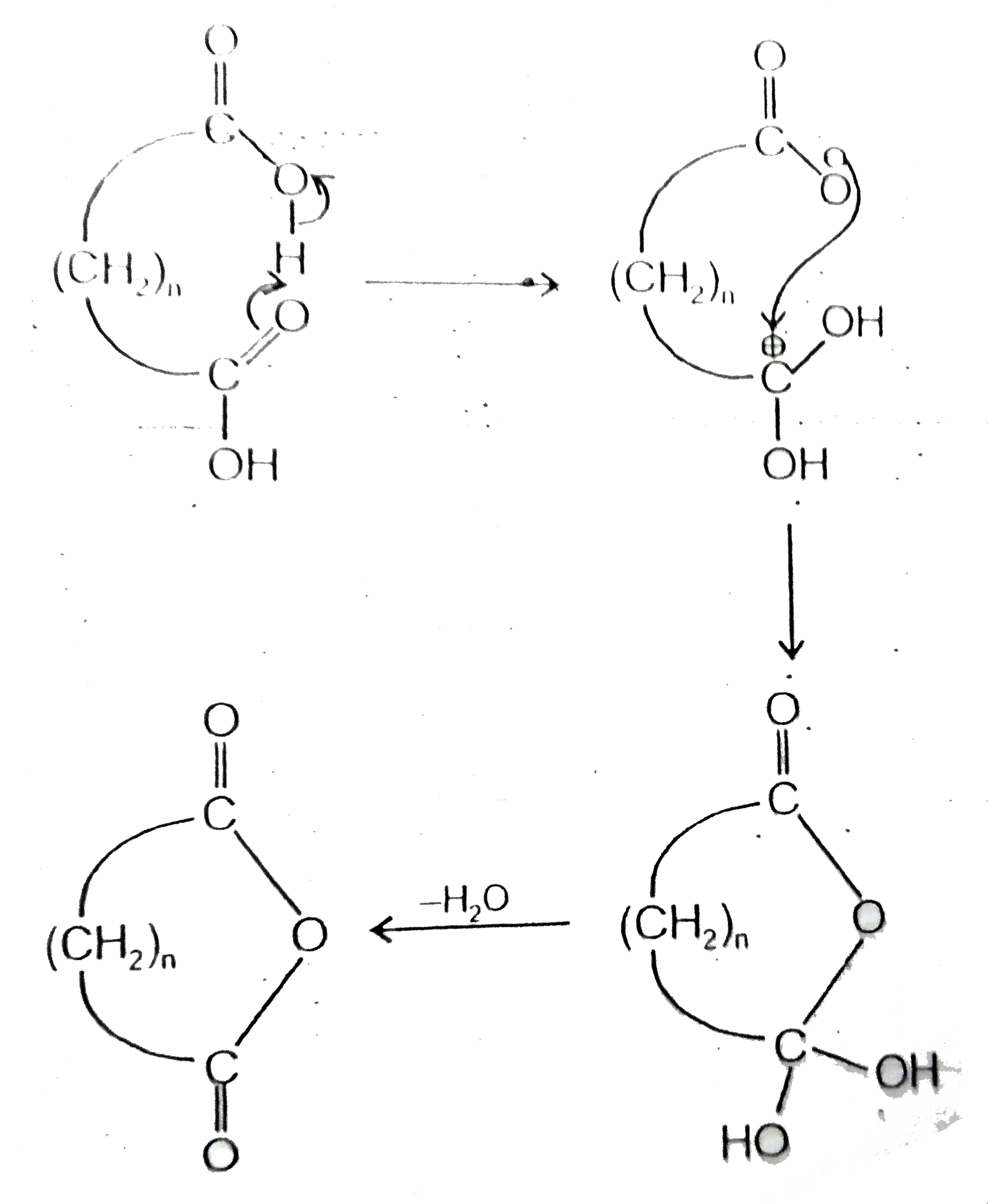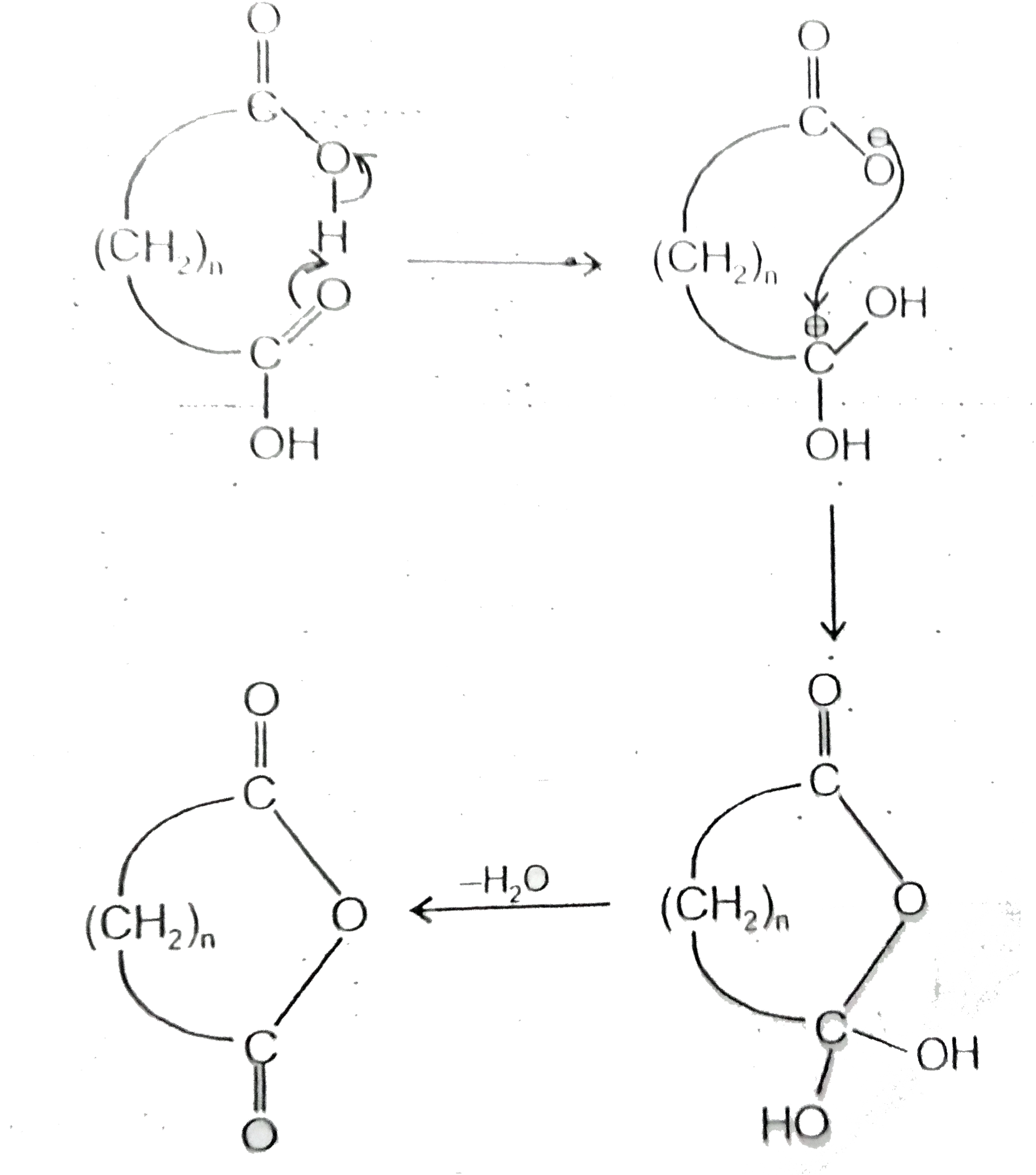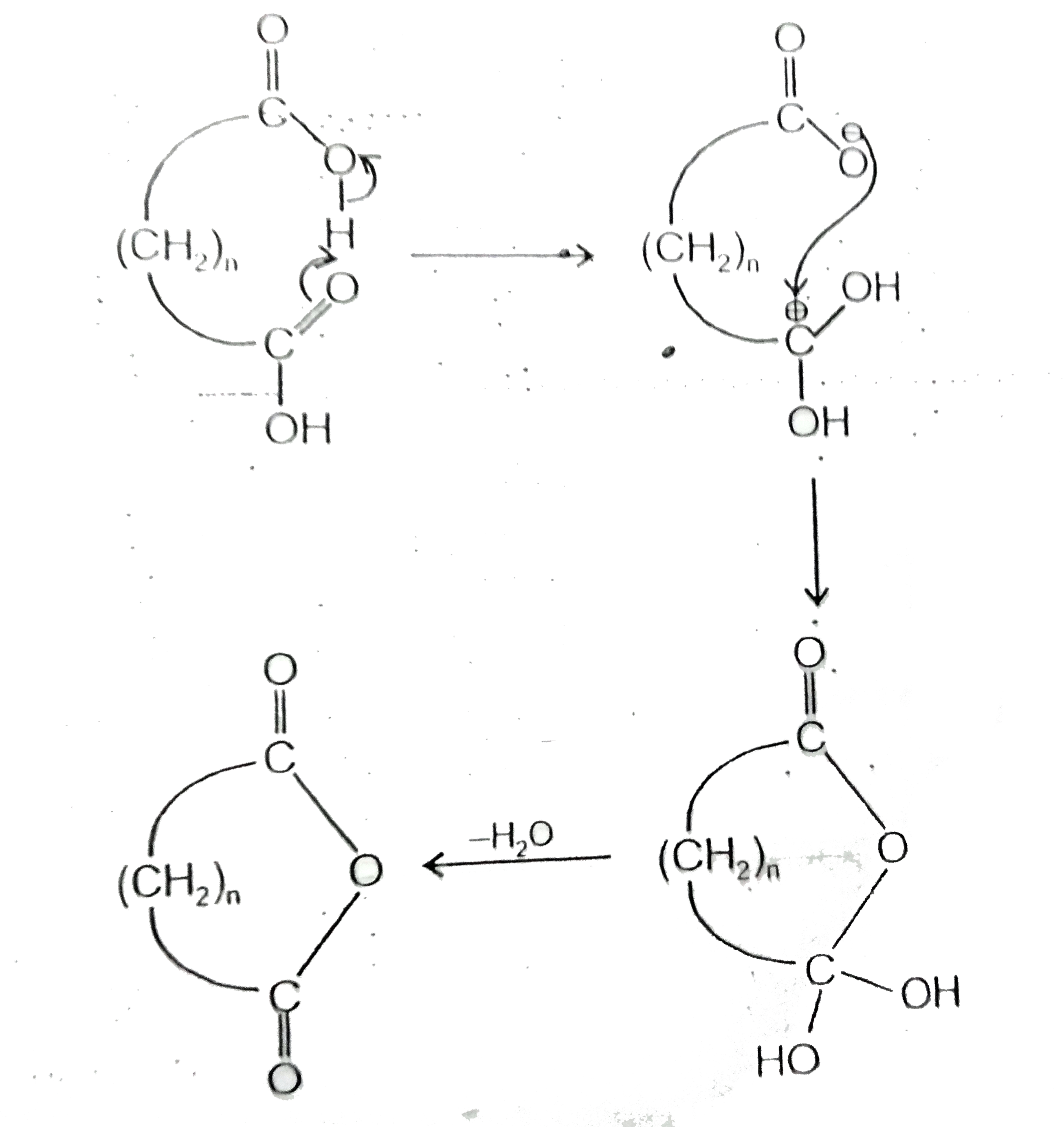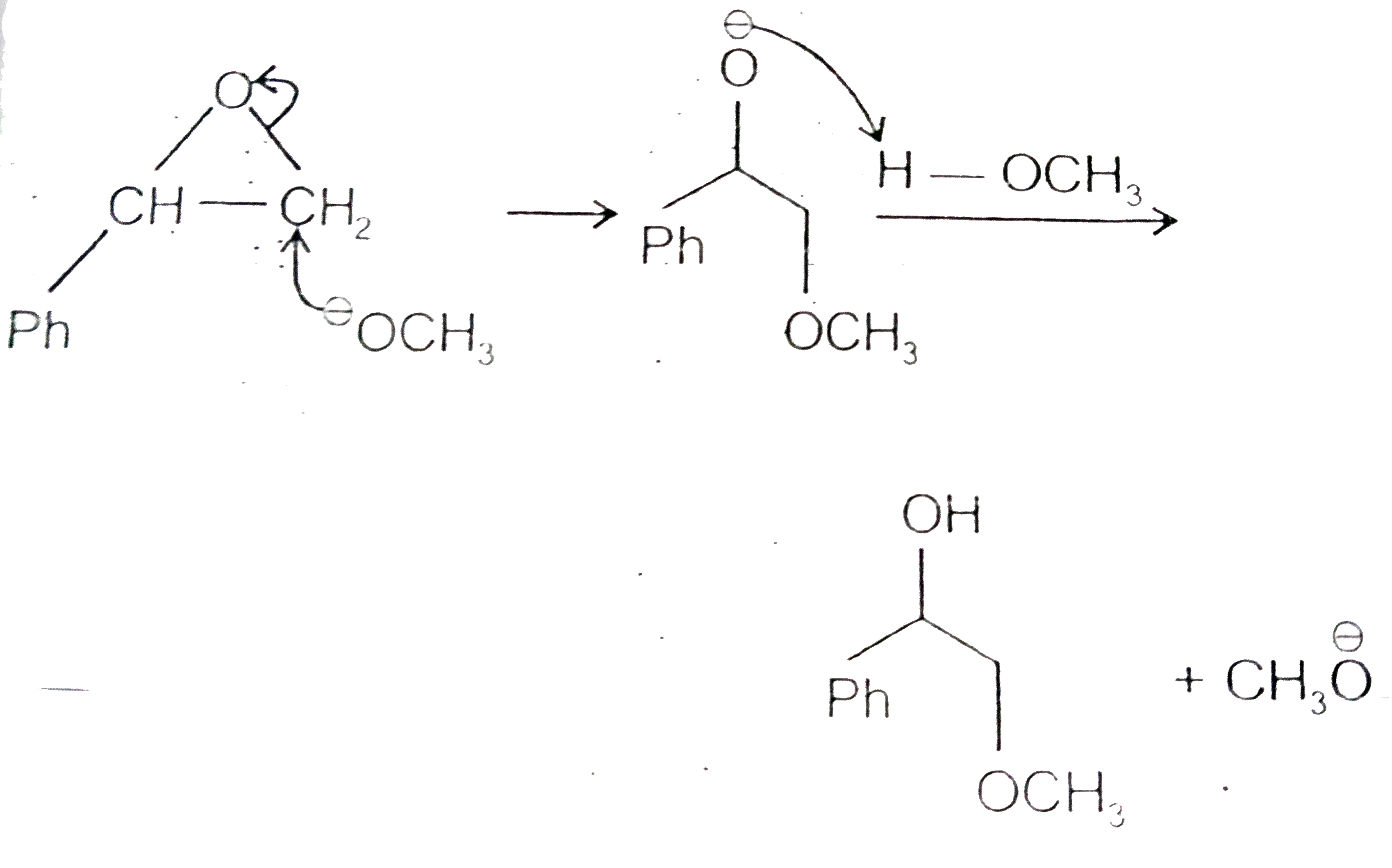Certain cyclic 1, 3-diketone give, under Clemmensen reduction, a fully reduced product along with a monoketone with ring contraction. Explain.
To explain the Clemmensen reduction of cyclic 1,3-diketones that leads to a fully reduced product and a monoketone with ring contraction, we can break down the process into several steps:
1. Identify the Structure of the 1,3-Diketone:
- Consider a cyclic 1,3-diketone. For example, let’s take a cyclohexane ring with two carbonyl (C=O) groups at the 1 and 3 positions. This structure can be represented as follows:
OO||||C1−−−−C2||C6−−−−C3||C5−−−−C4
2. Initiation of Clemmensen Reduction:
- The Clemmensen reduction involves treating the diketone with zinc amalgam (Zn/Hg) in the presence of hydrochloric acid (HCl). The acidic environment facilitates the formation of a free radical.
3. Formation of Free Radicals:
- The HCl donates a proton (H⁺) to one of the carbonyl oxygens, leading to the formation of a free radical. The bond between the carbon and oxygen breaks, resulting in the formation of a radical at the carbon adjacent to the carbonyl group.
4. Radical Coupling:
- The free radicals formed can couple with each other. The carbon atoms adjacent to the carbonyl groups will form new bonds, leading to the creation of an intermediate structure. This intermediate will have two hydroxyl (OH) groups.
5. Dehydration:
- The hydroxyl groups can lose water (H₂O) through dehydration, resulting in the formation of a double bond between the carbons. This step leads to the formation of a ketone.
6. Ring Contraction:
- As the reaction proceeds, the six-membered ring undergoes a contraction to form a five-membered ring. This is due to the rearrangement of the carbon skeleton during the radical coupling and subsequent reactions.
7. Final Product Formation:
- The final product is a monoketone with a five-membered ring structure. The other carbonyl group has been fully reduced to a methylene group (–CH₂–), resulting in a fully reduced product.
Final Structures:
- The final products of the reaction are:
- A fully reduced product (a saturated compound).
- A monoketone with a contracted ring structure.
Summary:
The Clemmensen reduction of cyclic 1,3-diketones leads to a fully reduced product and a monoketone due to the formation of free radicals, radical coupling, dehydration, and ring contraction.
- Consider a cyclic 1,3-diketone. For example, let’s take a cyclohexane ring with two carbonyl (C=O) groups at the 1 and 3 positions. This structure can be represented as follows:
OO||||C1−−−−C2||C6−−−−C3||C5−−−−C4
- The Clemmensen reduction involves treating the diketone with zinc amalgam (Zn/Hg) in the presence of hydrochloric acid (HCl). The acidic environment facilitates the formation of a free radical.
- The HCl donates a proton (H⁺) to one of the carbonyl oxygens, leading to the formation of a free radical. The bond between the carbon and oxygen breaks, resulting in the formation of a radical at the carbon adjacent to the carbonyl group.
- The free radicals formed can couple with each other. The carbon atoms adjacent to the carbonyl groups will form new bonds, leading to the creation of an intermediate structure. This intermediate will have two hydroxyl (OH) groups.
- The hydroxyl groups can lose water (H₂O) through dehydration, resulting in the formation of a double bond between the carbons. This step leads to the formation of a ketone.
- As the reaction proceeds, the six-membered ring undergoes a contraction to form a five-membered ring. This is due to the rearrangement of the carbon skeleton during the radical coupling and subsequent reactions.
- The final product is a monoketone with a five-membered ring structure. The other carbonyl group has been fully reduced to a methylene group (–CH₂–), resulting in a fully reduced product.
- The final products of the reaction are:
- A fully reduced product (a saturated compound).
- A monoketone with a contracted ring structure.
The Clemmensen reduction of cyclic 1,3-diketones leads to a fully reduced product and a monoketone due to the formation of free radicals, radical coupling, dehydration, and ring contraction.
Topper's Solved these Questions
- REDUCTION AND OXIDATION REACTION OF ORGANIC COMPOUNDSBOOK - CENGAGE CHEMISTRY ENGLISHCHAPTER - REDUCTION AND OXIDATION REACTION OF ORGANIC COMPOUNDSEXERCISE - EXERCISES
1 Videos
- REDUCTION AND OXIDATION REACTION OF ORGANIC COMPOUNDSBOOK - CENGAGE CHEMISTRY ENGLISHCHAPTER - REDUCTION AND OXIDATION REACTION OF ORGANIC COMPOUNDSEXERCISE - Exercise (Linked Comprehension)
52 Videos
- REDUCTION AND OXIDATION REACTION OF ORGANIC COMPOUNDSBOOK - CENGAGE CHEMISTRY ENGLISHCHAPTER - REDUCTION AND OXIDATION REACTION OF ORGANIC COMPOUNDSEXERCISE - EXAMPLE
1 Videos
- QUALITATIVE INORGANIC SALT ANALYSISBOOK - CENGAGE CHEMISTRY ENGLISHCHAPTER - QUALITATIVE INORGANIC SALT ANALYSISEXERCISE - Viva Voce Questions And Part-C (Analysis Of Cations)
42 Videos
- SOLID STATEBOOK - CENGAGE CHEMISTRY ENGLISHCHAPTER - SOLID STATEEXERCISE - Ex 1.2 (Objective)
9 Videos
Similar Questions
Certain dicarboxylic acids spontaneously eliminate water when heated forming cycioc anhydirides. But for the reaction to be successfully. The cyclic anhydrides product must normally have a ring size of fivee or six members. There are two important reasons, first, the second carboxyl group can serve as the acid catalyst (by intramolecular proton transfer), as well as the nucleophile. And second, the high temperature involved reduce the need for catalyst.

Which of the following dicarboxylic acid would you expect to form cyclic anhydride?
View SolutionCertain dicarboxylic acids spontaneously eliminate water when heated forming cycioc anhydirides. But for the reaction to be successfully. The cyclic anhydrides product must normally have a ring size of fivee or six members. There are two important reasons, first, the second carboxyl group can serve as the acid catalyst (by intramolecular proton transfer), as well as the nucleophile. And second, the high temperature involved reduce the need for catalyst.

Which of the following dicarboxylic acid will not for cyclic anhydrides?
View SolutionCertain dicarboxylic acids spontaneously eliminate water when heated forming cycioc anhydirides. But for the reaction to be successfully. The cyclic anhydrides product must normally have a ring size of fivee or six members. There are two important reasons, first, the second carboxyl group can serve as the acid catalyst (by intramolecular proton transfer), as well as the nucleophile. And second, the high temperature involved reduce the need for catalyst.

Consider the following sequence of reaction,

The final product of the reaction would be
View Solution(a) Write the chemical reaction involved in Wolf-Kishner reduction.
(b) Arrange the following in the increasing order of their reactivity towards nucleophilic addition reaction :
C6H5COCH3,CH3−CHO,CH3COCH3
(c) Why carboxylic acid does not give reactions of carbonyl group ?
(d) Write the product in the following reaction.
CH3CH2CH=CH−CH2CN1.(i−Bu)2AlH−−−−−−−−−−→2.H2O
(e) A and B are two functional isomers of compound C3H6O. On heating with NaOH and I2, isomer B forms yellow precipitate of iodoform whereas isomer A does not form any precipitate. Write the formulae of A and B.
View SolutionIn one-dimensional kinematics, a particle can move strictly along a straight line. The description of motion of the particle can be done in two ways: (i) mathematical equation and (ii) graphs.
The choice of a particular method for solving a problem often depends upon the type and nature of problem, for example the graphical method provides more physical insight One dimensional motion is categorised into
1. motion with constant velocity
2. motion with constant acceleration, and
3. accelerated and de-accelerated motion
If you represent inotion (1) by the graph on position time and velocity-time coordinates, the graphs may look like as given below.
One very interesting case comes up, when a particle is thrown at a certain angle from the horizontal, the particle travels in the medium along a curved path, known as parabola. - The trajectory of the parabola written in the mathematical equation is given by
y=xtanθ−12gx2((v0cosθ))2
Ineglect resistance of medium and its motion where Vs and are the initial velocity of the projectile and the projection angle at the point of projection measured with the + x axis. There are some applications which we have seen in our life, like in many game shows, the theory of the projectile is always used An air gun is aimed at an elevated target, which is released in a free fall by some mechanism as the bullet leaves the nozzle. Irrespective of falling speed of object, the bullet will always hit the target.
QOut of the two methods, graphical method and mathematical equation, which gives you the better precision

View SolutionRedox is a reaction in which both oxidation and reduction will take place simultaneously . It is obvious that if one substance gives electron there must be another substance to accept these electrons . In some reactions, same substance is reduced as well as oxidised, these reactions are termed as disproportionation reactions.
For calculating equivalent mass in redox reaction change in oxidtaion number is realted to n-factor which is reciprocal of molar ratio.
When P reacts with NaOH, the products are PH3 and NaH2PO2 which of the following statement is correct ?
View SolutionWhen an atom or an ion is missing from its normal lattice site, a lattice vacancy (Schottky detect) is created In stoichiometric ionic crystals, a vacancy of one ion has to be accompanied by the vacancy of the oppositely charged ion in order to maintain electrical neutrality.
In a Frenkel defect an ion leaves its position in the lattice and occupies an interstitial void.This is the Frenkel defect commonly found along with the Schottky defects and interstitials.In pure alkali halides, Frendel defect are not found since the ions cannot get into the intenstitial sites.Frenkel defects are found in silver halides because of the small size of the Ag+ ion.Unlike Schottky defects. Frenkel defects do not change the density of the solids.In certain ionic solids (e.g. AgBr) both Schottky and Frenkel defects occur.
The defects discussed above do not disturb the stoichiometry of the crystalline meterial.There is large Such solids showing deviations from the ideal stoichiometric composition form an important group of solids For example in the vanadium oxide, VOx, x can be anywhere between 0.6 and 1.3.There are solids which are difficult to prepare in the stoichiometric composition.Thus, the ideal composition in compounds such as FeO is difficult to obtain (normally we get a composition of Fe0.85O but it may range from Fe0.93 O to Fe0.96O).Non-stoichiometric behaviour is most commonly found for transition metal compounds through is also known for some lanthanoids and actinodes.
Zinc oxide loses oxygen reversibly at high temperature and turns yellow in colour.The excess metal is accomdated interstitially, giving rise to electrons trapped in the neighbourhood.the enhanced electrical conductivity of the non-stoichiometric ZnO arises from these electrons .
Anion vacancies in alkali halides are produced by heating the alkali halide crystals in an atmosphere of the alkali metal vapour.When the metal atoms deposite on the surface they diffuse into the crystal and after ionisation the alkali metal ion occupies cationic vacancy whereas electron occupies anionic vacancy.Electrons trapped in anion vacancies are referred to as F-centres (from Farbe the German word for colour) that gives rise to interesting colour in alkali halides.Thus, the excess of potassium in KCl makes the crystal appear violet and the excess of lithium in LiCl makes it pink.
In the crystal of Fe0.93O, the percentage of Fe (II) will be
View SolutionThere are some deposits of nitrated and phosphates in the earth's crust. Nitrates are more soluble in water. Nitrates are difficult to reduce under laboratory conditions but microbes do it easily. Ammonia forms a large number of complexes with transition metal ions. Hybridisation easily explains the ease of sigma donation capability of NH3 and PH3. Phosphine is a flammable gas and is prepared from white phosphorous.
White phosphorous on reaction with NaOH gives PH3 as one of the products. This is a.
View SolutionAttack by a strong nucleophile such as CH3OΘ (Methoxide ion ) on an epoxide occurs at the least hindered carbon similar to an SN2 reaction

Attack by a weak nucleophile such as MeOH . Can occur only when the epoxide has been protonated so that a better leaving group is formed under acidic condition weak nucleophile attacks more substituted carbon to give final product .
Which statement is true about base ring opening reaction of epoxide ?
View SolutionWhen pinacol is treated with dilute H2SO4, a re-arangement reaction takes place which leads to the formation of a ketone.
CH3−OH∣C∣CH3−OHC∣CH3−CH3H2SO4−−−→CH3−O∣∣C∣CH3−CH3∣C−CH5
This reaction involves re-arrangement of carbocation
Step 1:
_S01_409_Q01.png)
CH3−OH∣C∣CH3−+OH2∣CCH3−CH2→CH3−OH∣C∣CH3−OH∣C∣CH3−+C∣CH3−CH3
Step 2:
Carbocation rearrange by hydride, alkyl shift to get as stable as they can. Stability is the driving force for re-arrangement migration of bond may also oC Cur. Where by ring expansion and ring contraction takes place. The relief of strain can provide a powerful driving force for re-arrangement.
_S01_409_Q02.png)
_S01_409_Q03.png)
What will be the product of following reaction
_S01_409_Q04.png)
R is:
View Solution
